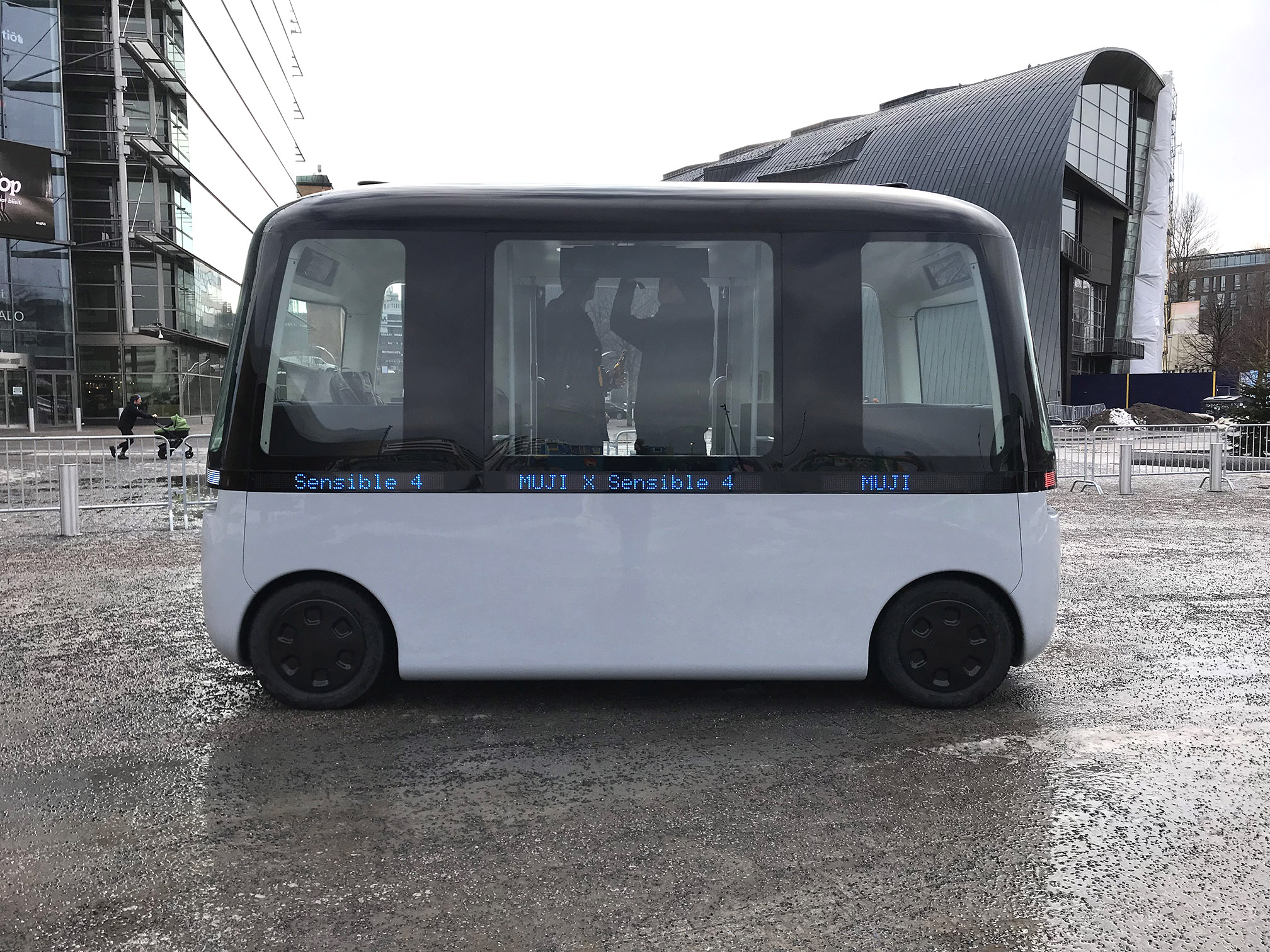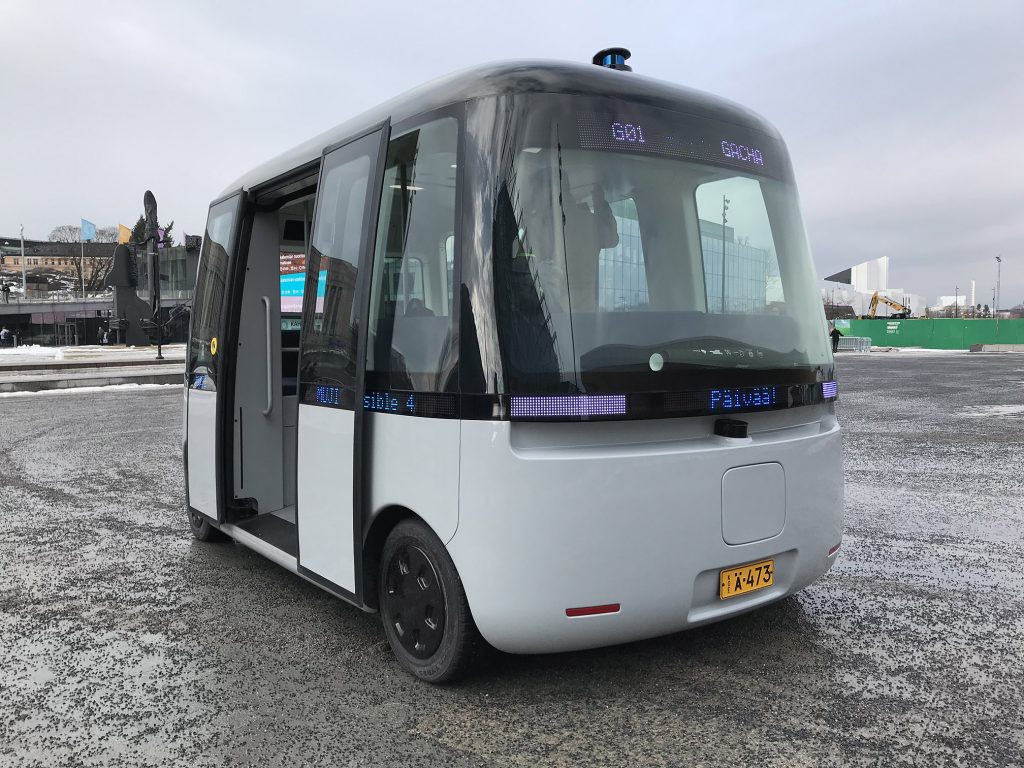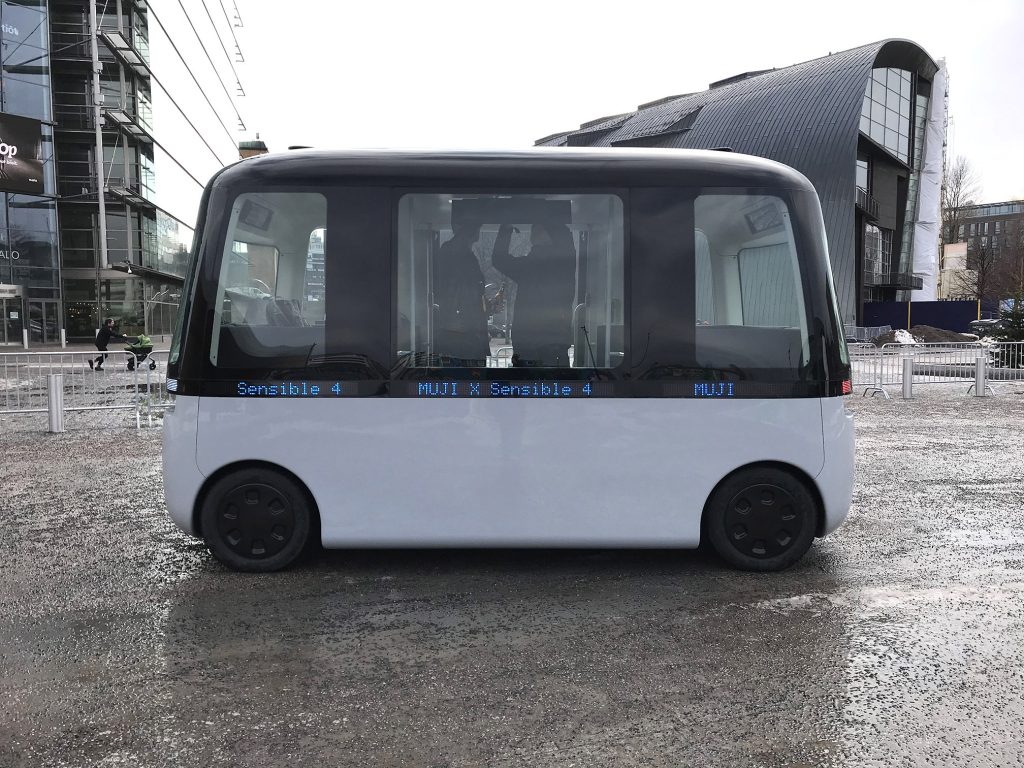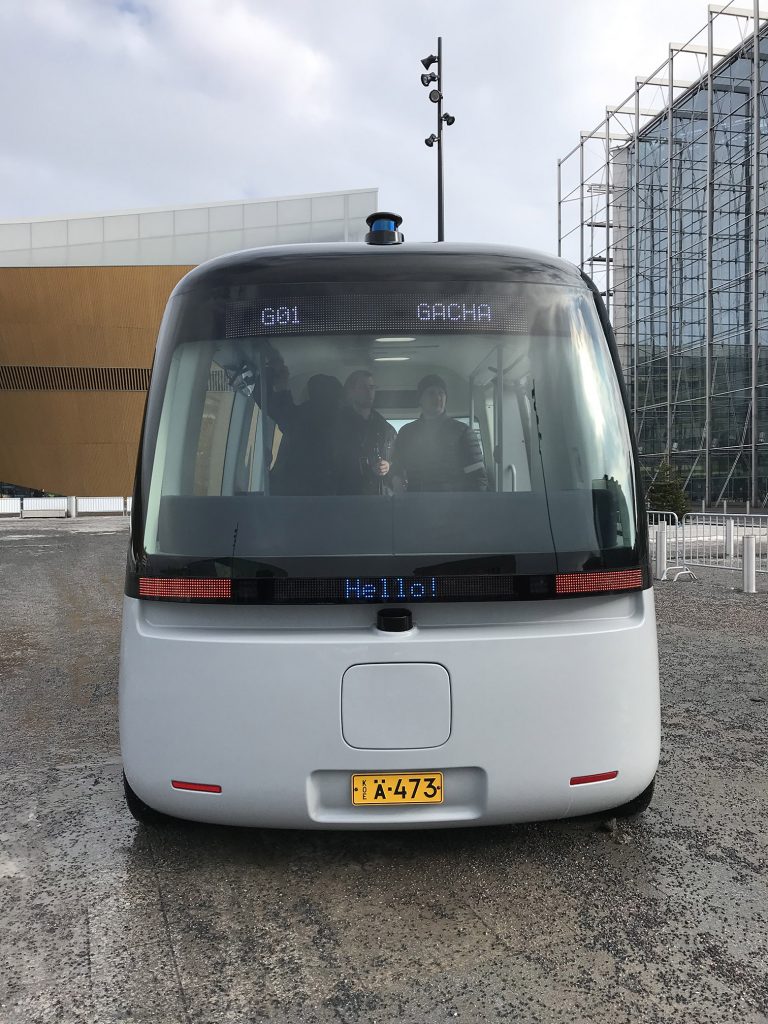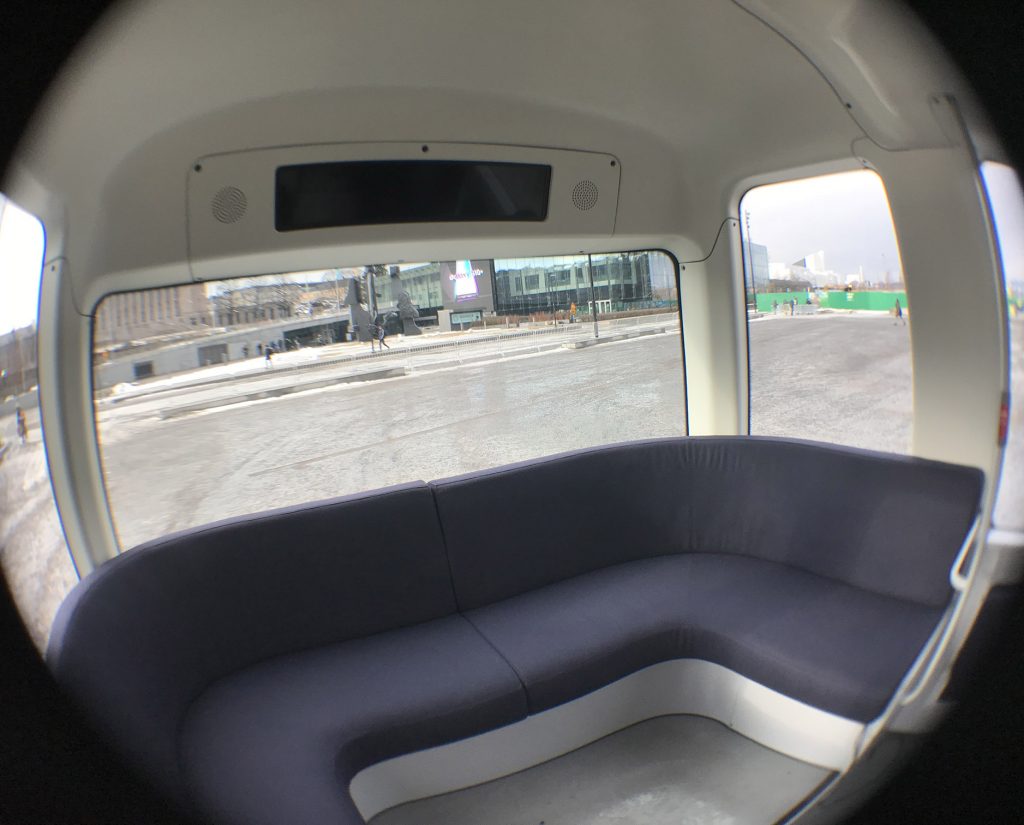aiGO Autonomous Bus Design Project 2017 – 2019
aiGO (A.I- Go!) was a 1 year design project integrated into Lahti Institute of Design learning processes, with multiple teams working on this funded client project.
Project manager Lee Walton decided to separate the design process for this ambitious project (to design and build a unique vehicle in 12 months!) into 2 distinct paths. Both processes began in September 2017. In total 37 students from various year groups, and specialities within Lahti Insitute of Design worked on this project.
Path 1: User Centred Interior and Exterior design for aIGO prototype vehicle.
This design path was taken by a small group of 2nd year students (12 total) of Vehicle Design, under the close direction of Lee Walton and experienced vehicle designer Timo Suomala (representing Sensible4 directly). The chief aim of this path was to create a 1:1 sized mock-up model of the bus interior, and to design the interior and exterior appearance and functionality of the prototype vehicle (to be constructed in 2018). The launch of the finished vehicle was very ambitiously scheduled for early 2019.
Path 2: User Centred Service and Strategic Design concepts, for aIGO steering group.
This design path was taken on by a multi-discipline group of 4th year Vehicle Design, Industrial Design, and Packaging & Branding Design students (25 students in total). This large group was split into 5 smaller groups who generated strategic product development concepts from in depth user research and detailed service design scenarios.
Some key milestones:
Kick-off to the project was in Helsinki on 14.9.2017 at the client Sensible 4 offices. Students were introduced to the engineering layout and ergonomics brief on 18.09.2017. I will explain results of each path in reverse order, as Path 2 was shortened at the request of our client.
User Scenarios – Path 2
A workshop day was arranged for 25.6.2017. A number of key clients to the aIGO project were invited to Lahti to take part in interview based workshops with our students. 6 Clients attended, and each client was placed with a small group of students. 25 students were divided equally among clients. Each group intentionally contained students from all 3 design specialities, Vehicle Design, Industrial Design, and Branding Design. Below you can see those client interviews in process. This day also enable all students to meet our main design client, the CEO of Sensible4, who formally presented the project to all involved.

The client workshop yielded 6 interesting scenarios, but this was reduced from 6 to only 5 due to a couple of scenarios being very similar. This enabled us to propose to our client, that we develop 5 very different product concepts. Students re-arranged themselves into topics that interested them. Group sizes were not equal, as they were based on motivation. Path 1 participants were much more experienced 4th year students who were given more freedom and autonomy in their work. Only a few key dates were scheduled for check-ups on their progress. The end results of their projects were presented to the client in person, on 28.11.2017. Below are a couple of examples from slideshows presented by students. Figure 3 shows a ski-bus scenario- privately rented and controlled by a group of friends, and Figure 4 shows how the bus could be implemented in the city of Tampere for an older generation of users. An enormous amount of information was presented by 5 groups.

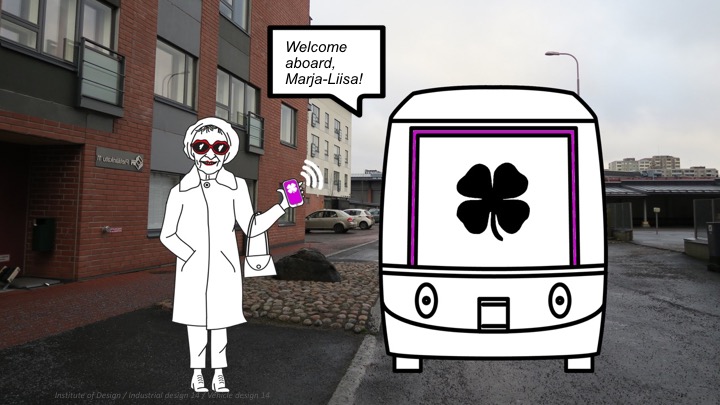
Prototype Design – Path 1
Path 2 was much more intense and much more heavily guided by project design managers and the client. Sensible4 provided CAD data and confidential information for their technical solutions. They also invited students to visit their office and see the technology for themselves. The process consisted of planning around the users, and potential passengers of this bus. This 2nd year group of students was tasked with measuring and creating dimensioned and accurate layouts for the ergonomic requirements of the vehicle. The client dictated some basic limits, and mechanical layouts, and students needed to package people around this. Creative ideas began the process, but the most important achievement was to build a wooden mock-up of the bus interior. Students started with a very rough layout idea, see figure 5.
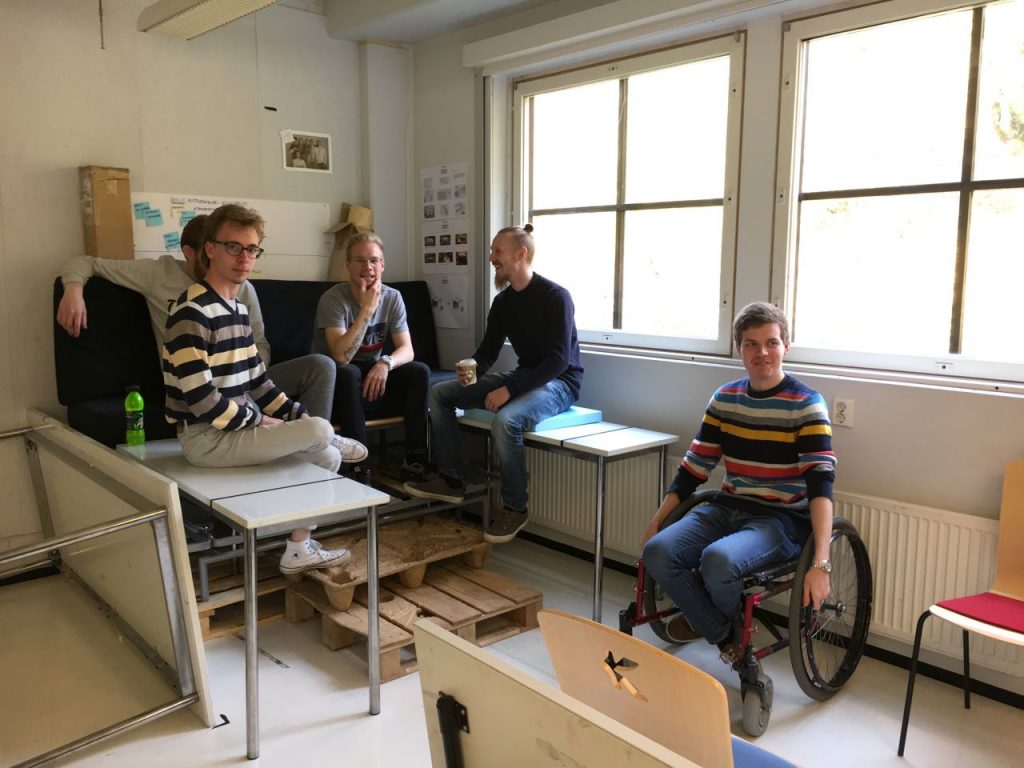
After client feedback, 2 different seating layouts of the vehicle were chosen and students very quickly constructed a full size wooden mock-up of the bus interior showing both layouts. This was viewed by all participants in the project, and our client was very impressed and pleased to sit in his bus! This mock-up was carefully measured by the CAD team of Sensible4 and directly affected the prototype layout. The design of our students was implemented almost fully by the client. The mock-up proved to be incredibly valuable for the design process. This mock-up was available for a highly secretive visit by Japanese designers representing MUJI. They were so impressed they funded the project, and later took over design management from us. Figures 6 and 7 show the large scale of the mock-up (still a very small bus).
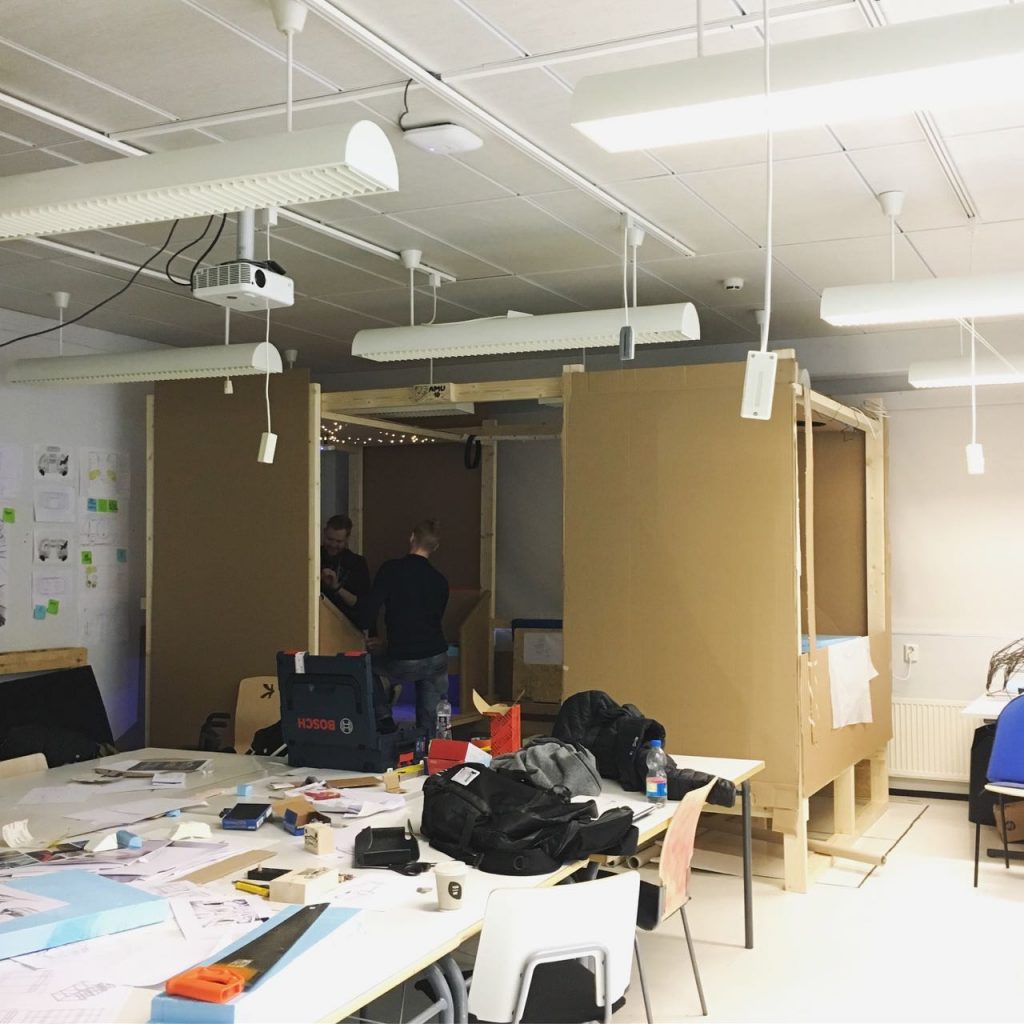
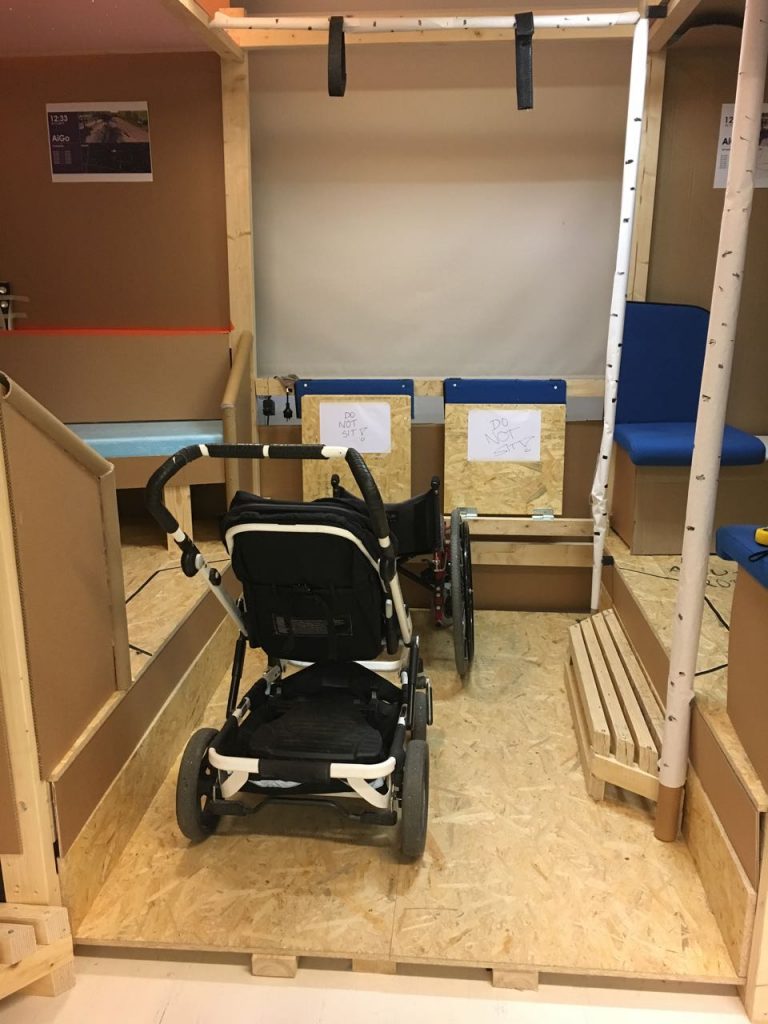
I am unable to share confidential data in this blog post (regarding actual dimensions and design drawings) but I can share images of our happy client sitting in his bus design. See Figure 8. After completion of this task on 31.11.2017 the students began designing the exterior of the bus. The user centred nature of public transport design dictates that it should always be designed from the inside outwards.
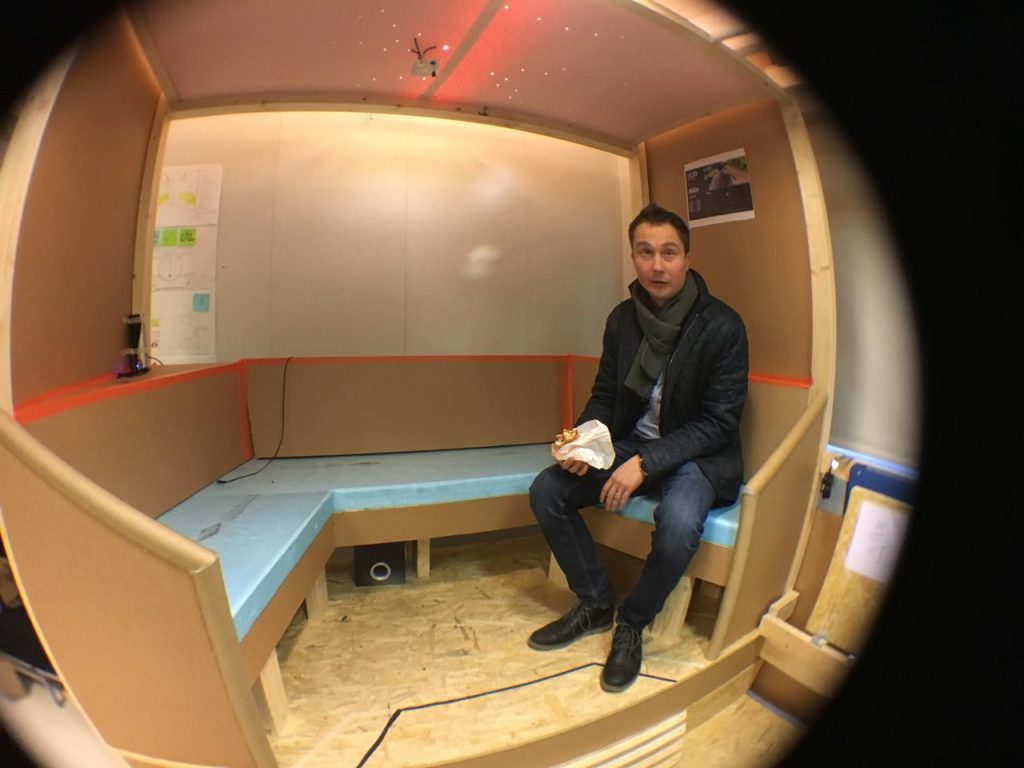

Students from Path 2 were presented with information from Path 1. The crossover of ideas worked in terms of user research, which helped inform many discussions for the project. A welcoming and friendly design was needed, and accessibility of the interior was a concern. The process consisted of individual design development by all students, in competition with each other, at all stages of Path 2. Eventually the exterior designs in particular, were narrowed to just 2 key design themes. The students that created these were placed into an Exterior design team (just 3 students) while all others (9 students) were selected to develop the more complex variations within the interior design. Each lesson was conducted with our client representative design manager Timo Suomala, and some sessions included our client via teleconference. Just before creating ideas for the exterior design, students visited the client to hear about the sensor technology that must be integrated. Figure 10 shows that client meeting, and then Figure 11 is an example of a design review day, for exterior concepts.
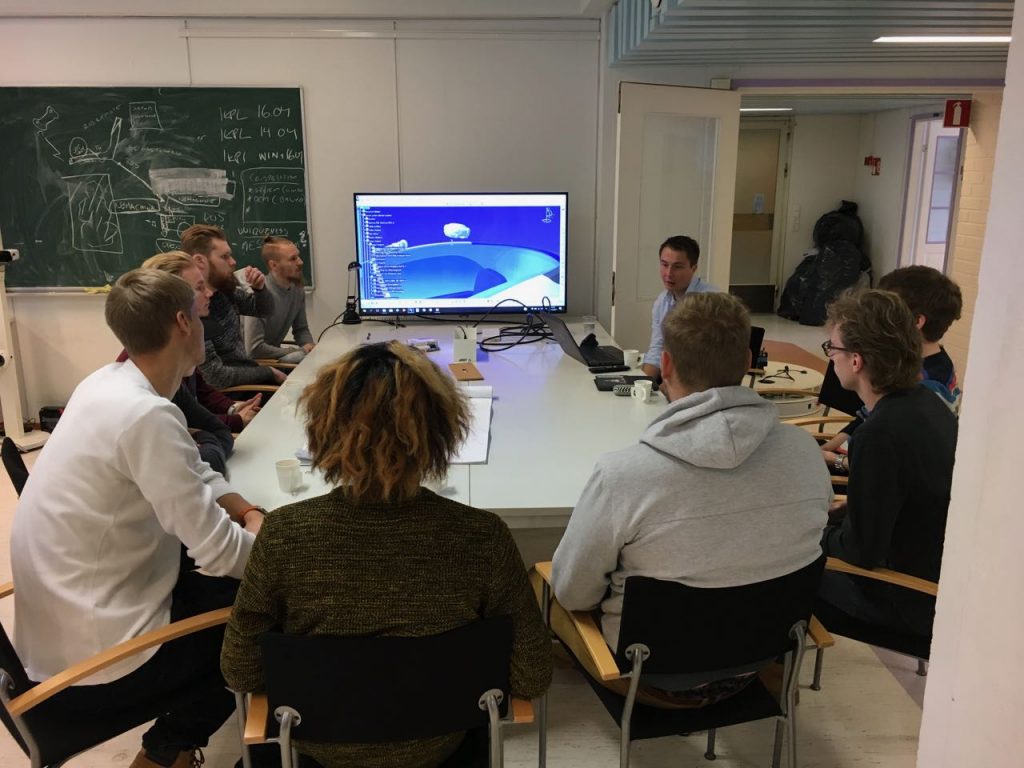
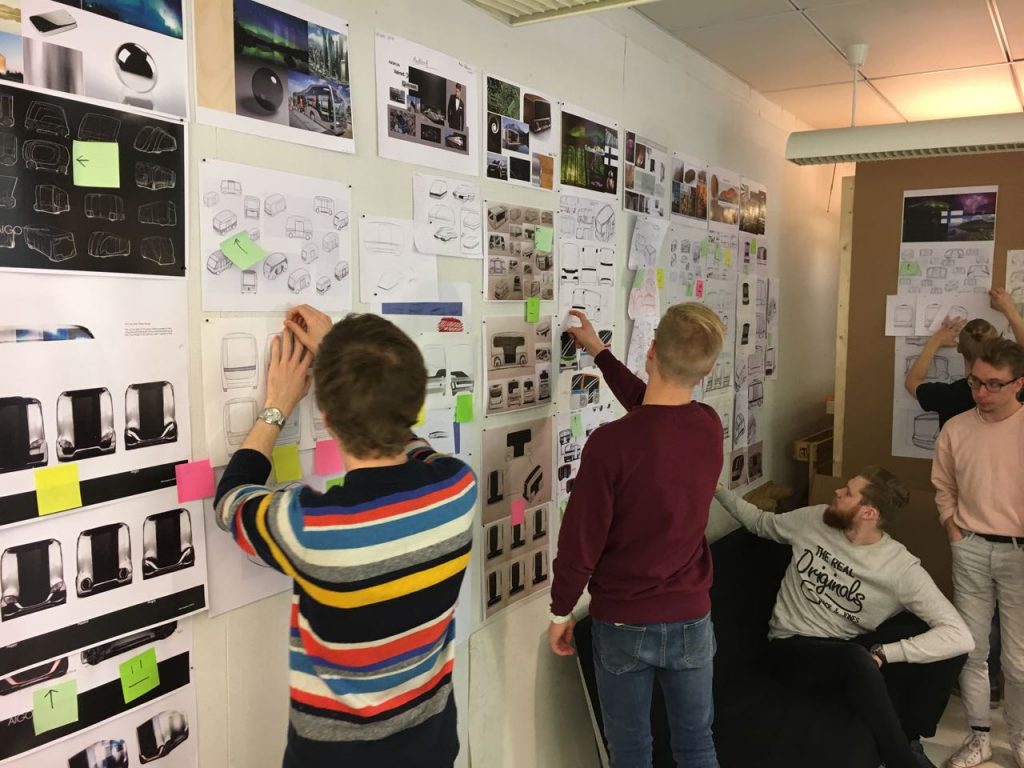

Final presentations of Path 2 were on 14.12.2017. Interior and Exterior designs were shown, and many details were discussed at great length (the whole day) with our client via their design representative and on teleconference. All materials were shared with our client at all times. The results (the chosen designs) are confidential and omitted from this article.
2017 ended with 2 clear exterior design directions (very subtle detail differences) and some excellent requests from our client, for clarification on a number of points. The interior design task is huge, and the results were fantastic in terms of range and scope. The task for 2018 was to finalize those we can do, and those that we cannot. Our client aimed to begin construction of the framework, early 2018, and our exterior design plans were planned to be developed into usable CAD data during 2018. Interior has a similar path, running slightly behind the exterior timeline.
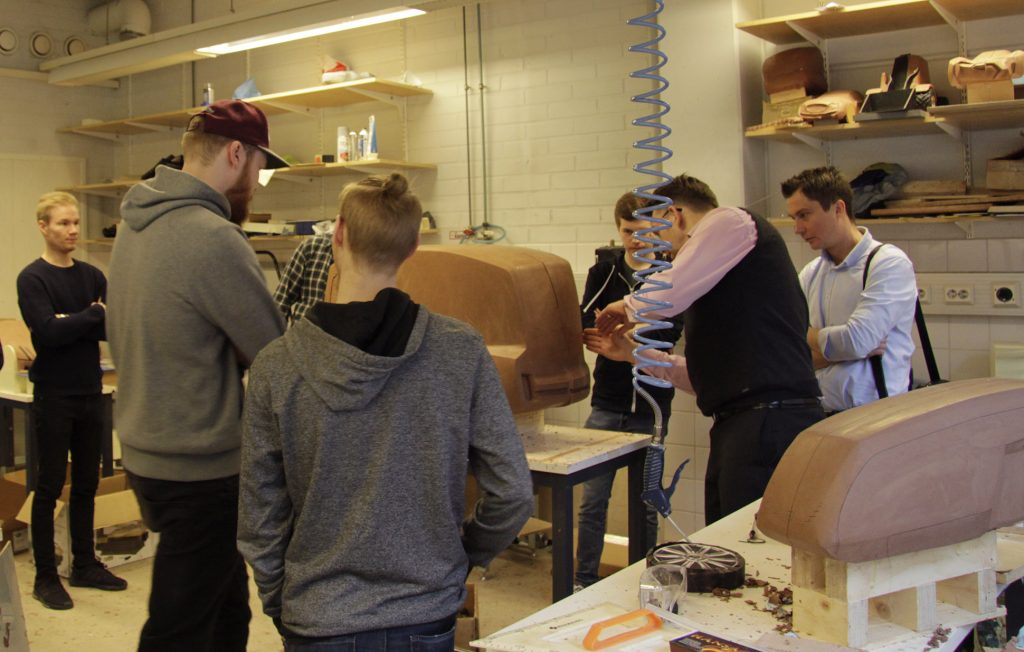
This is about the time that our previous secret visitors decided to invest heavily into the project, and to take over design responsibilities from us (only Sensible 4 know exactly when the MUJI deal was signed). This was a huge success story for a start-up such as Sensible4 and added massive funding and expertise to the project. The later stages of the design were led by Timo Suomala (and not Lee Walton) as the design school stepped aside and let MUJI and Sensible4 focus on producing the running prototype for the start of 2019! Two of our students were chosen by Sensible4 to work as interns during the summer of 2018, to assist Timo and MUJI with the final design and build process. Those talented individuals were Jaakko Järvinen and Jarkko Salonen (see fig. 14). They worked essentially as the internal design team for Sensible 4, while externally the project was managed by MUJI Design. This proved to be an ideal situation for the project, but collaborating with a remote Japanese studio, while based in Helsinki can not have been easy! The team grew in size, and did an amazing job as the project came closer to reality.

MUJI GACHA 2018 – 2019
Officially, GACHA is a collaboration between Japanese furniture company MUJI and Finnish autonomous driving company Sensible 4. It is designed to be a ‘self-driving’ bus that functions under all weather conditions. MUJI take full credit for design of GACHA (copyrights were transferred to Sensible4 from the very beginning, and MUJI invested heavily into the project).
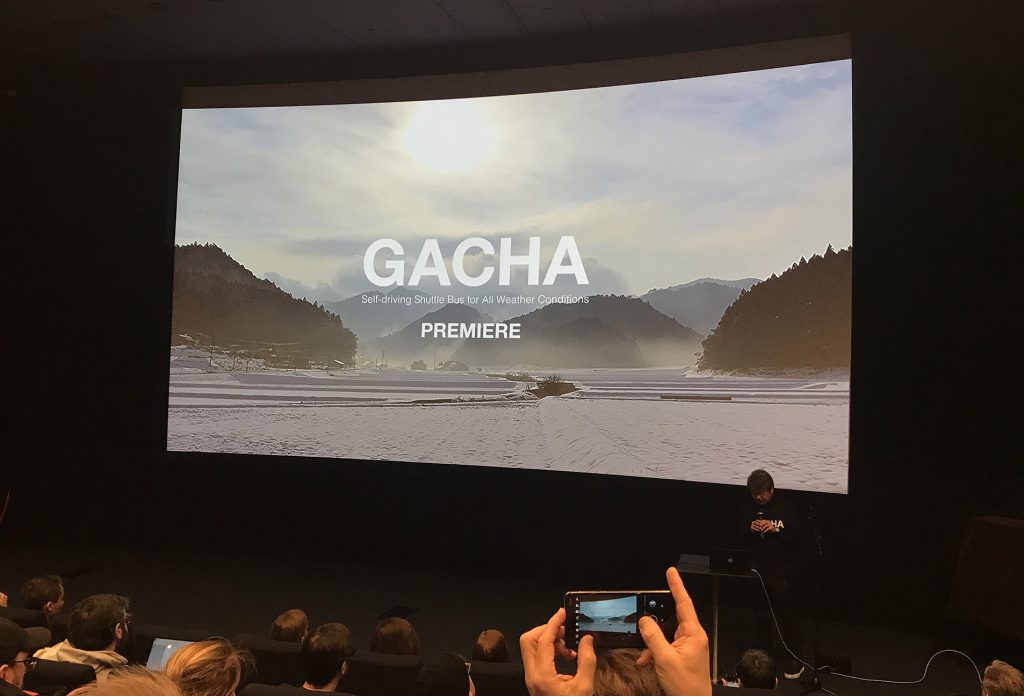
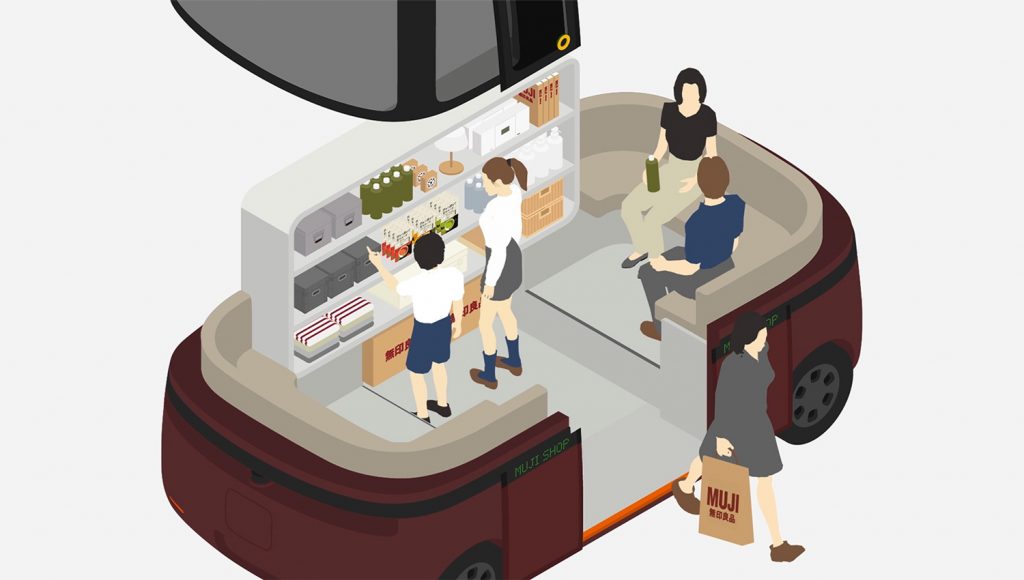
The final prototype build of the MUJI GACHA was guided by Timo Suomala and design work was done by Jaakko Järvinen at Sensible 4 (Jaakko continued to work on the project well into 2020!). The conceptual idea of a “Gacha” was a stroke of genius from MUJI design team, with cultural and aesthetic reference to the Gashapon capsule toy craze in Japan. These are vending machines that give out plastic capsules with random toys inside (see figure 15-17). The idea was, that the anonymous and versatile shape of the autonomous vehicle created by Sensible 4, could be used to “capsulise” and transport anything, not just passengers- was brilliant and really sets the GACHA bus apart from other concepts. Toyota later revealed a very similar direction for their own autonomous vehicle technology. A versatile platform, not just one vehicle.
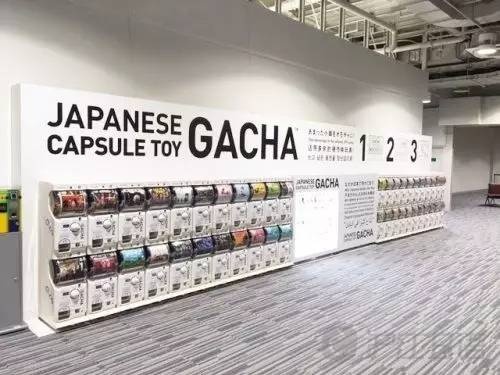
Results were stunning.
One of the most exciting parts of the process happened in March 2019. The vehicle project became a fully functioning reality- and was unveiled to the world’s press on 8th March, at Helsinki Oodi library. Thanks to the MUJI brand, and their plans to open a store in Helsinki that same year- the press coverage was extensive. Project manager Lee Walton attended the premiere, and actually got to ride inside the bus. After testing the initial interior mock-up a year before, the similarities were very apparent. Our project kick-starting exactly the right user experience and mood that made it all the way to the final vehicle. The bench seats in particular- inspired by Finnish sauna culture and community seating layout were a standout feature. This interior aspect was talked up by MUJI chief designer in his presentation at the premiere, referencing the sauna influence. The bus drove smoothly on our test drive, in snow and ice. The interior ambience was particularly light, friendly and spacious for such a small vehicle.

During 2019 Sensible4 have received many accolades, such as Start-up of the year etc. The GACHA vehicle itself gained lots of attention, and universal praise for MUJI design. The bus won a very prestigious design award, from the London Design Museum within the transportation category for 2019. We couldn’t be more proud, as our student’s contribution was valuable right until the end of the project. We would also like to thank CEO Harri Santamala for approaching us and having the foresight to involve our young inexperienced design students. We are extremely happy that Lahti Institute of Design was the first place that came to his mind when attempting such an ambitious project. This is why we do what we do- and the success of this project gives us huge pleasure.
https://www.designboom.com/technology/muji-self-driving-bus-gacha-sensible-4-03-13-2019/
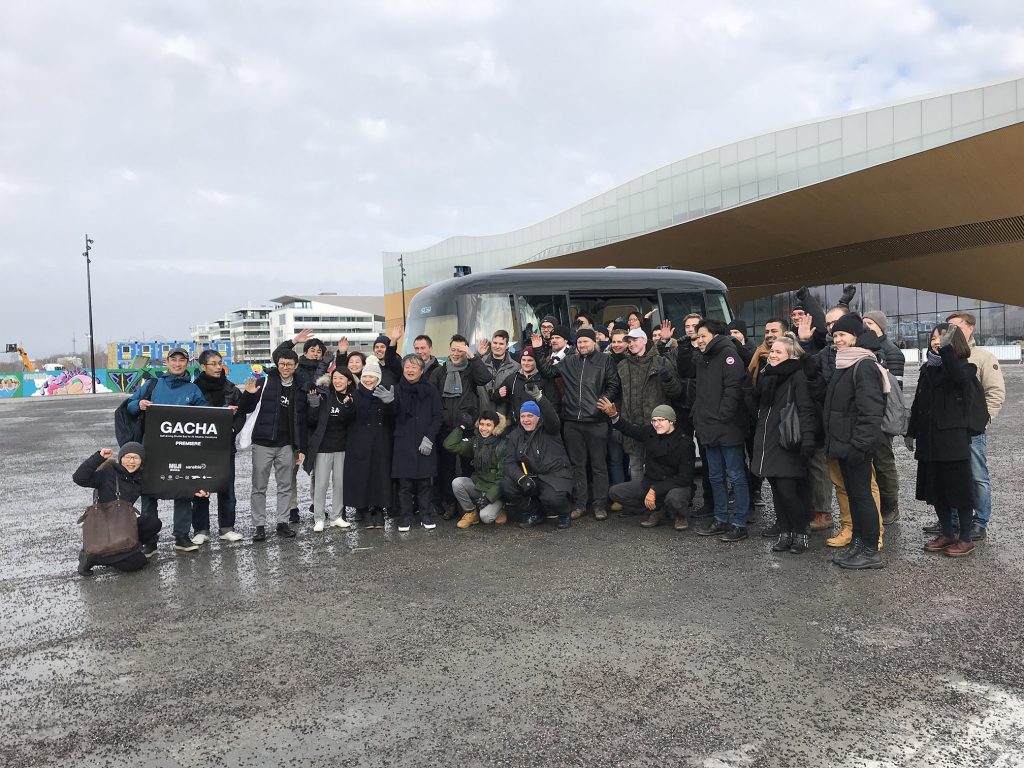
List of student participants:
Path 1
- Casimir Smitsmans
- Jenna Salminen
- Sarianna Kymäläinen
- Katja Efremova
- Daria Ivanova
- Petra Paatero
- Outi Saukkonen
- Inga Tammivuori
- Minttu Kettunen
- Emmi Putkonen
- Tomi Koskimäki
- Tatu Konttinen
- Mikke Leinonen
- Ruusu-Maria Laihonen
- Peppi-Emilia Salmi
- Sanna Jaakkola
- Ivo Mukkulainen
- Teemu Paavola
- Olli Koivumäki
- Sonja Esken
- Anniina Mäkelä
- Vilna Orrenmaa
- Perttu Susi
- Oona Räyhäntausta
- Julia Töyrylä

Path 2
Exterior group
- Jaakko Järvinen
- Jarkko Salonen
- Nicklas Sundvall
Interior group
- Antti Tirri
- Inka Tiikainen
- Julias Ranta
- Matias Laaksonen
- Matias Pekkonen
- Mikko Huusko
- Mikko Leppänen
- Tuomas Tolonen
- Kenshiro Ohtu

